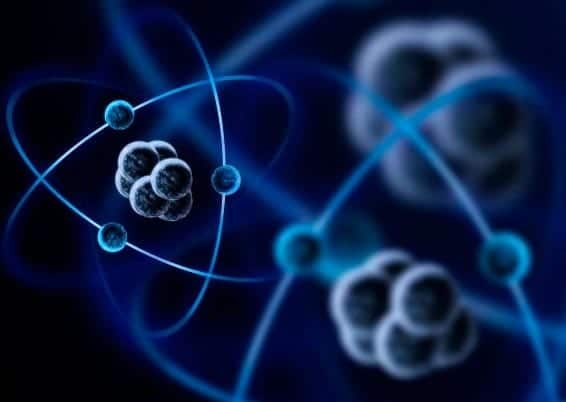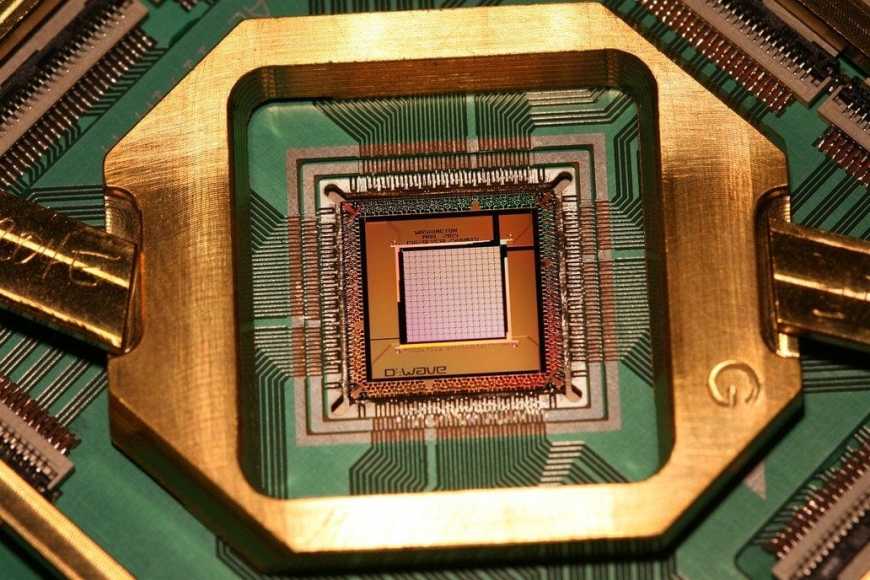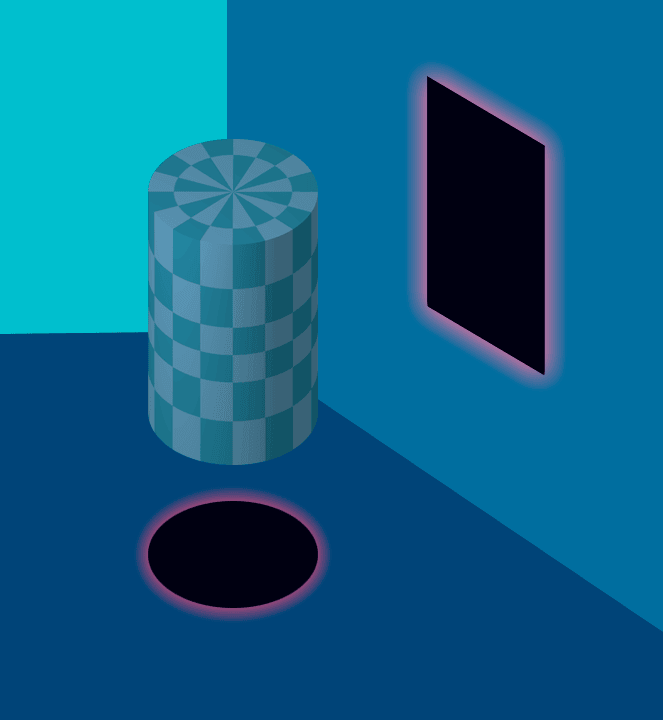You will be asking yourself a lot. What is a quantum processor and how does it work? In this article, we will go into this world and try to learn more about this strange being that maybe one day will be part of our beautiful RGB chassis, pure quantum.
Like everything in this life, either you adapt or you die. And it is precisely what happens with technology and not precisely in a range of millions of years as living beings but in a matter of years or months. Technology advances at a dizzying pace and large companies do not stop innovating in their electronic components. More power and less consumption to protect the environment, are the premises that are now fashionable. We have reached a point where the miniaturization of integrated circuits is almost reaching the physical limit. Intel says it will be 5 nm, beyond that there will be no Moore’s Law worth. But another figure gains strength and is the quantum processor. Shortly we begin to explain all your kindness.
With IBM as a precursor, major companies such as Microsoft, Google, Intel, and NASA are already enjoying a struggle to see who is able to build the most reliable and powerful quantum processor. And it is probably the near future. We see what all this is about the quantum processor
Why do we need a quantum processor?
The current processors are based on transistors. Through a combination of transistors, logic gates are built to process the electrical signals that flow through them. If we join a series of logical gates we will obtain a processor.
The problem is then in its basic unit, the transistors. If we miniaturize these, we can place more in one place providing more processing power. But of course, there is a physical limit in all this, when we reach transistors so small that they are of the order of nanometers, we have problems so that the electrons circulating inside them do it correctly. There is a possibility that these will go out of their channel, collide with other elements inside the transistor and produce chain failures.
And this is precisely the problem, that we are currently reaching the limit of security and stability to manufacture processors using classic transistors.
Quantum computing
The first thing we have to know is what quantum computing is, and it is not easy to explain. This concept is far from what we know today as classical computing, which uses bits, or binary states of “0” (0.5 volts) and “1” (3 volts) of an electrical impulse to form logical chains of computable information.

Quantum computing on its part uses the term qubit or cubbit to refer to the processable information. A qubit not only contains two states such as 0 and 1 but it is also capable of simultaneously containing 0 and 1 or 1 and 0, that is, it can have these two states at the same time. This implies that we do not have an element that takes discrete values 1 or 0, but, being able to contain both states, it has a continuous nature and within it, certain states that will be more and less stable.
The more qubits more information can be processed
Precisely in the capacity to have more than two states and to have several of them at the same time, lies its power. We could be able to do more simultaneous calculations and in a shorter time. The more qubits more information can be processed, in this sense, it resembles traditional CPUs.
How a quantum computer works
The operation is based on the quantum laws that govern the particles that form the quantum processor. All particles have electrons in addition to protons and neutrons. If we take a microscope and see a flow of electron particles, we can see that they behave like waves. What characterizes a wave is that it is an energy transport without there being any transport of matter, for example, sound, they are vibrations that we can not see, but we know that they travel through the air until they reach our ear.
For electrons are particles that are able to behave either as a particle or as a wave and this is what causes superposition of states and can be given 0 and 1 at the same time. It is as if the shadows of an object are projected, in one angle we find one form and in another. The conjunction of the two forms the shape of the physical object.
So, instead of two values 1 or 0 that we know as bits, which are based on electrical voltages, this processor is able to work with more states called quanta. A quantum, in addition to measuring the minimum value that a magnitude can take (for example 1 volt), is also capable of measuring the minimum possible variation that this parameter can experience when passing from one state to another (for example, being able to differentiate the form of an object through two simultaneous shadows).
We can have 0, 1 and 0 and 1 at the same time, that is, bits superimposed on top of each other
To be clear, we can have 0, 1 and 0 and 1 at the same time, that is, bits superimposed one on top of the other. The more qubits, the more bits we can have on top of each other and then more values we can have simultaneously. In this way in a 3-bit processor, we will have to do tasks that have one of these 8 values, but no more than one at a time. instead, for a 3 qubits processor, we will have a particle that can take eight states at a time and then we can do tasks with eight operations simultaneously
To give us an idea, the most powerful processor unit ever created currently has a capacity of 10 teraflops or what is the same 10 trillion floating point operations per second. A processor of 30 qubits would be able to do this same amount of operations. IBM already has a 50-bit quantum processor and we are still in the experimental phase of this technology. Imagine how far we can go. As you can see, the performance is much higher than in a normal processor. As the qubits of a quantum processor increase, the operations it can perform multiply exponentially.
How can you create a quantum processor
Thanks to a device that is capable of working with continuous states instead of having only two possibilities it is possible to rethink problems that until now were impossible to solve. Or solve current problems more quickly and efficiently. All these possibilities open with a quantum machine.
To “quantize” the properties of molecules we have to bring these to near absolute zero temperature
To achieve these states, we can not use transistors based on electrical impulses that will eventually be either a 1 or a 0. For this, we will have to look further, concretely in the laws of quantum physics. We will have to achieve that these qubit formed physically by particles and molecules are able to do something similar to what transistors do, that is, manage to establish relations between them in a controlled way so that they offer us the information we want.
This is the truly complicated and the subject to overcome quantum computing. To “quantize” the properties of the molecules that make up the processor we have to bring these to near absolute zero temperature (-273.15 degrees Celsius). So that the machine knows how to differentiate one state from another, we need to get them to be different, for example, a current of 1 V and 2 V, if we put a voltage of 1.5 V the machine will not know which is one or the other. And this is what must be achieved.
Disadvantages of quantum computing
The main drawback that seems to be in this technology is precisely that of controlling these different states through which matter can pass. By having simultaneous states it is very difficult to perform stable calculations using quantum algorithms. This is called quantum disharmony, although we will not go into unnecessary gardens. What we must understand is that the more qubits we will have more states, and the greater number of states we will have more speed, but also the more difficult to control will be the errors in the changes of the matter that occur.
Moreover, the rules that govern these quantum states of atoms and particles say that we can not observe the computation process while it occurs, because, if we interfere in it, the overlapping states would be completely destroyed.
Quantum states are tremendously fragile and computers must be completely isolated from vacuum and temperatures close to absolute zero to achieve an error rate of the order of 0.1%. Or the manufacturers of liquid refrigeration put the batteries or we are without the quantum computer for Christmas. Due to all this, there will be at least medium-term quantum computer for users, perhaps there may be a few of these scattered around the world in the required conditions and we can access them through the Internet.
Applications
With its processing power, these quantum processors will be mainly destined to scientific calculation and to solve problems that are unsolvable to date. The first of the application areas are possibly chemistry, precisely because the quantum processor is an element based on particle chemistry. Thanks to this one could study the quantum states of the matter, today impossible to solve by conventional computers.
After this, it could have applications for the study of the human genome, the investigation of diseases etc. The possibilities are enormous and the real pretensions, so we can only wait. We will be ready for the review of the quantum processor!


